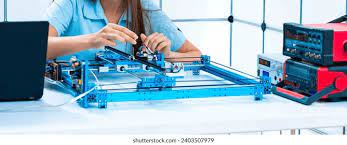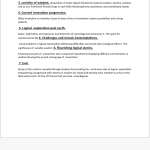In the Front line of the Body:
Envision a specialist whose hands never shudder, whose vision can amplify tissue a thousandfold, and whose each choice is educated by a huge, steadily developing data set of clinical information. This is the fate of a medical procedure, introduced by man-made intelligence fueled careful robots. These machines, with their exact developments and constant information examination, are helping specialists in carrying out complex systems with unrivaled precision and negligible obtrusiveness.

From sensitive mind a medical procedure to complicated joint substitutions, these robots are saving lives as well as working on quiet results and decreasing recuperation times. The da Vinci Careful Framework, for instance, has been utilized in huge number of systems around the world, and its effect on disease medical procedure, heart medical procedure, and different claims to fame is obvious.
Specialists on call representing things to come:
Debacle zones are many times turbulent and hazardous conditions, where human people on call put their lives in danger to save others. This is where artificial intelligence fueled robots can be significant resources. Envision deft robots furnished with warm imaging cameras exploring imploded structures, looking for survivors, and conveying basic supplies. Or then again imagine durable robots, impenetrable to dangerous materials, clearing garbage, recognizing underlying shortcomings, and in any event, carrying out essential clinical guide.

These are not unrealistic fantasies; they are the truth being molded by organizations like Boston Elements, whose Spot robot is as of now being utilized for calamity reaction preparing and observation. Furthermore, with headways in computer based intelligence and mechanical technology, these machines will turn out to be significantly more modern and fit, saving lives and limiting dangers despite catastrophic events and different crises.
Past the Front line and Calamity Zone:
The effect of man-made intelligence fueled robots reaches out a long ways past the domain of high-stakes situations. In our day to day routines, these machines are changing the manner in which we live and work. From mechanical vacuum cleaners keeping our floors perfect to simulated intelligence controlled partners offering friendship and backing, robots are flawlessly incorporating into our homes and schedules.

In the working environment, robots are taking on perilous or monotonous errands, opening up human specialists for additional imaginative and key undertakings. In medical care, simulated intelligence fueled robots are helping with patient consideration, medicine apportioning, and, surprisingly, psychological well-being treatment. The conceivable outcomes are huge, and as man-made intelligence innovation keeps on advancing, the job of robots in our lives will just turn out to be more significant.
The Moral Problem:
Obviously, the ascent of computer based intelligence fueled robots presents moral difficulties that need cautious thought. Issues of protection, wellbeing, and occupation uprooting should be tended to mindfully and proactively. We should guarantee that these machines serve mankind, not supplant it, and that their improvement is directed by moral standards and dependable administration.
The future with robots isn't one to fear, yet one to embrace with mindful hopefulness. By tackling the force of artificial intelligence and mechanical technology dependably, we can make an existence where these machines are devices, however accomplices in the works, assisting us with exploring the difficulties and immediately jump all over the chances of the 21st hundred years. In this way, the following time you see a robot, recollect, it may very well be the legend we didn't realize we really wanted.
Robots to the Rescue: AI Ushering in a New Era of Assistance
From the sterile hum of surgical suites to the chaotic aftermath of natural disasters, a new breed of heroes is emerging: robots powered by artificial intelligence (AI). These tireless and adaptable machines are revolutionizing how we care for the sick, navigate emergencies, and even navigate our daily lives. Let's explore the intricate ways AI-powered robots are reshaping our world:
Healthcare Revolution:
Surgery with a Scalpel of Silicon: Imagine surgeons wielding robotic arms with superhuman precision, performing minimally invasive procedures that reduce pain and recovery times. AI algorithms analyze data in real-time, assisting surgeons in decision-making and optimizing their movements. Robots like the da Vinci Xi system are already transforming delicate surgeries, while AI-powered robots like Versius promise wider accessibility and affordability.
Diagnosis with the Power of Algorithms: AI algorithms are trained on vast medical datasets, enabling them to detect diseases with unmatched accuracy. From analyzing mammograms to predicting patient outcomes, AI empowers doctors to make informed decisions and intervene early. Robots like the MIRA robot scan X-rays and identify abnormalities, streamlining workflows and improving diagnostic accuracy.
Rehabilitation Reimagined: Physical therapy gets a high-tech makeover with AI-powered exoskeletons and rehabilitation robots. These robots guide movement, provide personalized feedback, and motivate patients, accelerating recovery and improving outcomes. Devices like the Ekso suit help patients regain mobility after strokes or spinal cord injuries, while robots like the Pepper personal robot offer companionship and motivation during rehabilitation.
Disaster Response Redefined:
First Responders of Steel and Code: Imagine robots venturing into hazardous environments, assessing damage, and locating survivors after earthquakes or floods. Autonomous drones equipped with AI can map affected areas, identify dangers, and even deliver essential supplies. Robots like Boston Dynamics' Spot can navigate rubble and locate survivors, while aerial bots like DJI's Matrice 300 RTK capture real-time footage for better coordination of rescue efforts.
Medical Aid Arrives on Wheels: In remote areas or war zones, medical care can be scarce. AI-powered robots like the MediRob can provide basic medical assistance, triage patients, and even perform CPR under the guidance of remote doctors. These robots bridge the gap between critical care and accessibility, saving lives in situations where human reach is limited.
Disaster Prevention and Mitigation: AI algorithms can analyze data from weather patterns and seismic activity to predict natural disasters with improved accuracy. This allows for early evacuation and resource allocation, minimizing damage and saving lives. Drones equipped with AI can monitor forest fires and identify potential hazards, enabling proactive disaster prevention efforts.
Everyday Life Transformed:
AI Assistants in Your Home: Robots like Amazon's Alexa and Google's Assistant are already transforming our homes, offering voice-controlled smart home automation, information on demand, and even personalized entertainment. Imagine robots learning your habits and preferences, anticipating your needs, and seamlessly integrating into your daily routine.
Enhanced Mobility and Assistance: Self-driving cars powered by AI offer safer and more accessible transportation, particularly for the elderly or disabled. Exoskeletons and robotic prosthetics powered by AI are restoring mobility and independence to those who have lost it, transforming their lives in profound ways.
Manufacturing and Logistics Revamped: AI-powered robots are already revolutionizing production lines, handling repetitive tasks with increased efficiency and precision. This optimizes manufacturing processes, minimizes errors, and boosts productivity. In warehouse logistics, robots navigate aisles autonomously, optimize picking and packing processes, and streamline fulfillment, enabling faster and more reliable deliveries.
Challenges and Promises Ahead:
The rise of AI-powered robots raises ethical concerns about job displacement, algorithmic bias, and data privacy. It's crucial to address these challenges responsibly, ensuring AI benefits humanity and minimizes potential harm. However, the potential of AI robots to improve lives, revolutionize industries, and tackle global challenges is undeniable. This is not just a technological shift; it's a cultural transformation, one where human ingenuity and empathy co-exist with the capabilities of intelligent machines.
Here are some ways to further delve into this topic:
Case studies: Spotlight specific examples of robots making a difference in healthcare, disaster response, or everyday life.
Expert interviews: Feature insights from robotics engineers, AI researchers, and ethicists to offer diverse perspectives.
Interactive elements: Create quizzes, polls, or discussions to engage your audience and spark thoughtful conversations about the future of AI robots.
Ethical considerations: Explore the potential downsides of AI robots and ways to address them responsibly.
The future of AI robotics: Speculate on potential future applications and the role AI robots will play in shaping our world.
By delving deeper into this topic, you can raise awareness about the transformative power of AI robots and spark meaningful conversations about the future of technology and its impact on humanity. Remember, the story of




You must be logged in to post a comment.